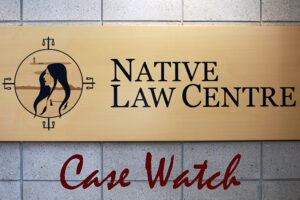The Court granted the Nunatsiavut Government declaratory relief in a dispute over the sharing of mineral taxation revenue from mining in Voisey’s Bay, Labrador under a Land Claims Agreement. These declarations clarified the 5% entitlement of the Nunatsiavut Government, that the provincial government should not be deducting certain costs incurred by the developer outside the Labrador Inuit Settlement Area, and that the provincial government breached its fiduciary duty in failing to provide adequate information to the Nunatsiavut Government regarding its negotiations with the developer.
The Inuit have been resident in Labrador since time immemorial. Traditionally they pursued hunting, fishing, whaling, sealing and gathering activities. The Inuit still have a heavy reliance on these traditional pursuits. Lithic materials were quarried to make stone implements such as harpoon heads and projectile points for arrows and spears. Soapstone was used for carving domestic items such as lamps and cooking vessels. Today many Inuit artists and craftspeople rely upon the quarrying of lithic materials to create sculptures and carvings.
The Labrador Inuit Association was formed for the purpose of negotiating the Labrador Inuit Land Claims Agreement [“Land Claims Agreement”]. It was ratified by all three levels of government: Canada, the Province of Newfoundland and Labrador and Nunatsiavut. The Land Claims Agreement is recognized as a modern-day treaty and came into force in 2005. The Labrador Inuit Association was replaced by the Nunatsiavut Government, which has the responsibility, on behalf of the Inuit, to implement the Land Claims Agreement. The Land Claims Agreement is a constitutionally protected modern treaty under s 35 of the Constitution Act, 1982. In case of conflict the provisions of the Land Claims Agreement prevail over federal and provincial legislation.
Voisey’s Bay is located in northern Labrador. The area was traditionally used by the Inuit in hunting, fishing and gathering activities. The Inuit’s Aboriginal interest in Voisey’s Bay was substantially affected by the Province declaring that the area was not available for selection by the Inuit once it learned that a world class nickel deposit lay beneath the surface. The Province’s de facto assumption of control over the area, and the successful negotiation of the Land Claims Agreement including a chapter relating to Voisey’s Bay, gave the Province responsibility for the management, calculation and disbursement of the Inuit Revenue share. In doing so, the Province owes the Inuit a duty of loyalty, good faith and full disclosure in the discharge of its obligations.
The Inuit negotiated under the Land Claims Agreement, and were granted, the right to be consulted by Canada and the Province in a number of areas including the Voisey’s Bay chapter. Under section 8.6.2 of the Land Claims Agreement the Province has a specific duty to consult with the Nunatsiavut Government prior to deciding an application for a permit or issuing an order pertaining to the Voisey’s Bay Project or to any other work or activity in the Voisey’s Bay Area. The duty to consult also exists outside the terms of the Land Claims Agreement. As explained by the Supreme Court of Canada, the duty to consult is imposed as a matter of law, irrespective of the parties’ “agreement”. It does not “affect” the agreement itself. It is simply part of the essential legal framework within which the treaty is to be interpreted and performed (Beckman v Little Salmon/Carmacks First Nation, 2010 SCC 53 [“Little Salmon”]).
The historic treaty between the Inuit and Newfoundland and Labrador is not a commercial contract, and should not be interpreted as one (First Nation of Nacho Nyak Dun v Yukon, 2017 SCC 58). It is a nation to nation agreement that deserves to be interpreted in a generous manner. It is an agreement that must be considered having regard to the treaty text as a whole and with a view to the treaty’s objectives.
The objective of modern land claims agreements is to bring about a reconciliation between the competing interests of the affected Aboriginal Peoples and the Crown. The establishment of a positive, long-term relationship is in everyone’s best interests (Little Salmon). To that extent, the terms of the modern treaty must be interpreted in a fashion that is sui generis. The honour of the Crown gives rise to a fiduciary obligation when the Crown assumes discretionary control over a specific or cognizable Aboriginal interest. The Crown’s fiduciary obligations include the fiduciary duties of loyalty, good faith and full disclosure (Williams Lake Indian Band v Canada (AAND), 2018 SCC 4).
Please see the Telegram link for news coverage regarding this case: https://www.thetelegram.com/news/provincial/an-expensive-loss-502108/





